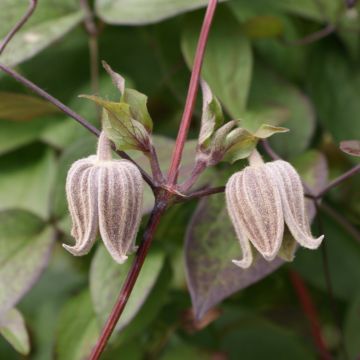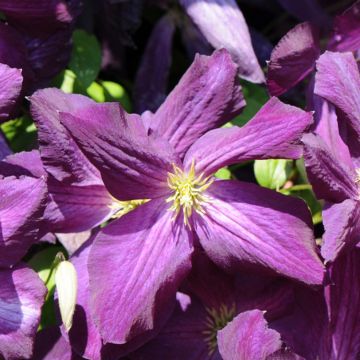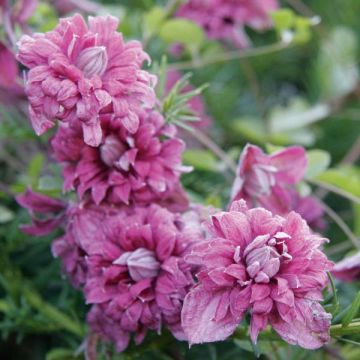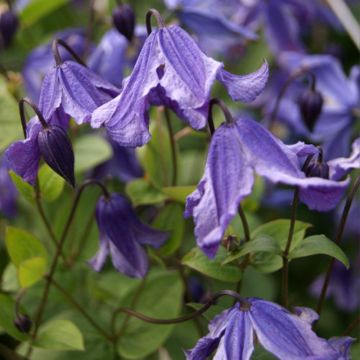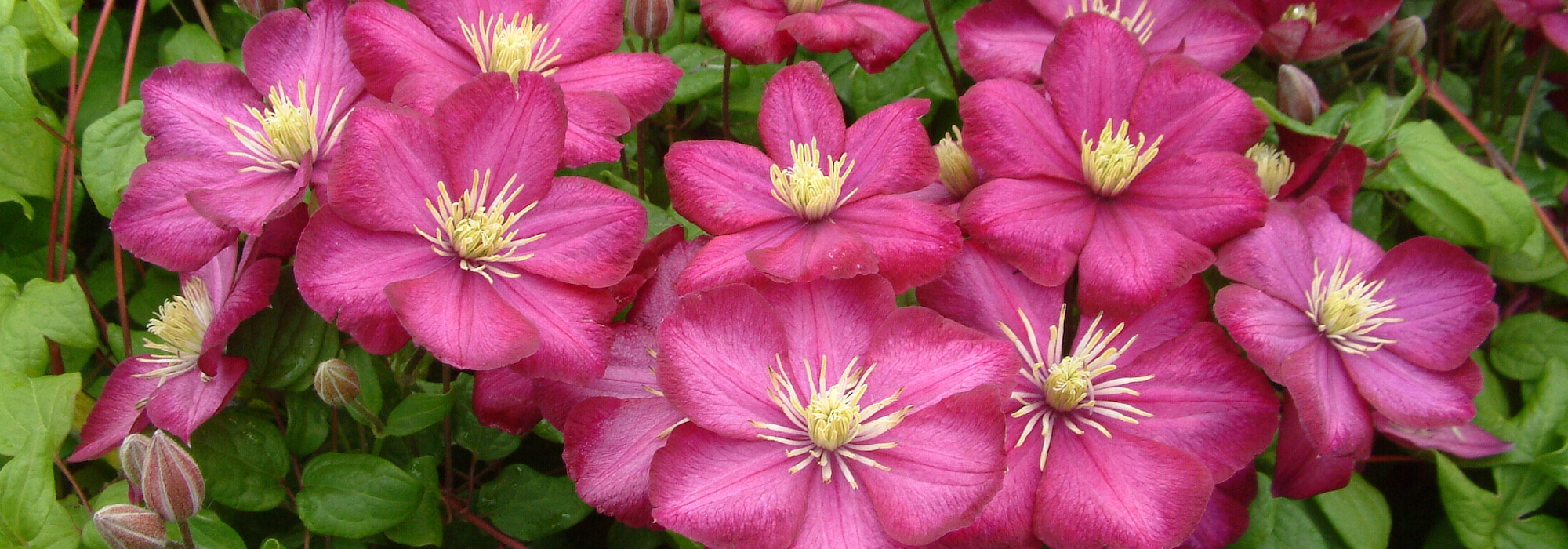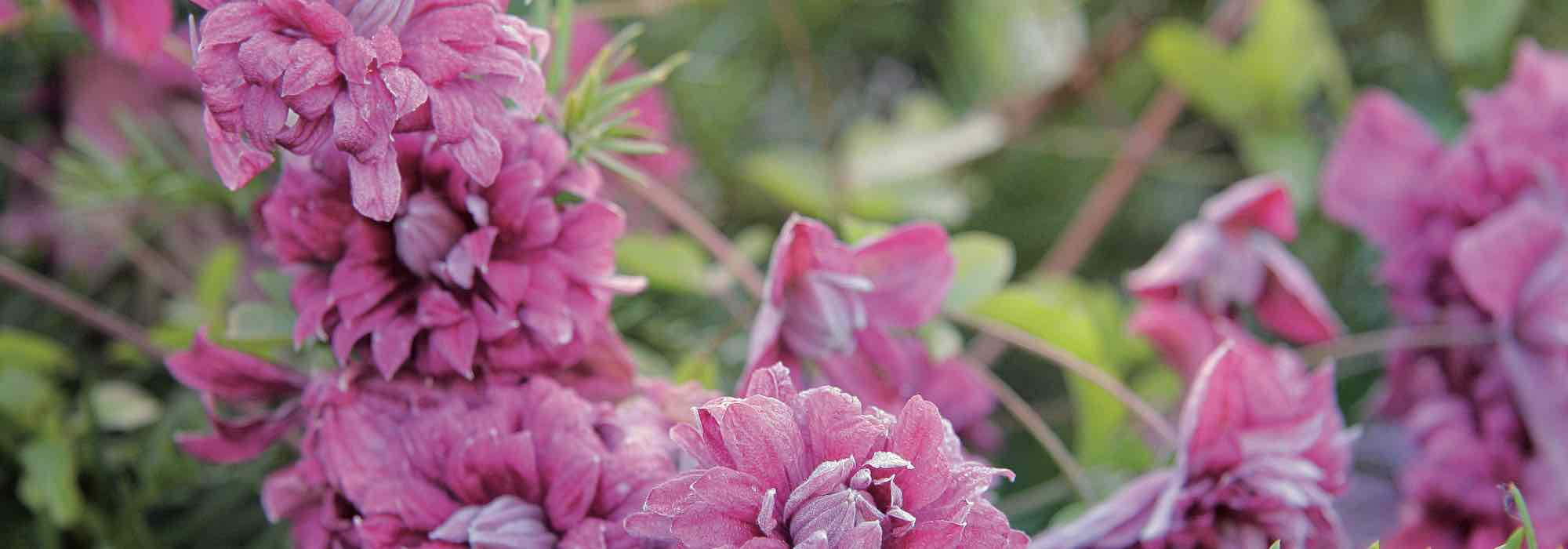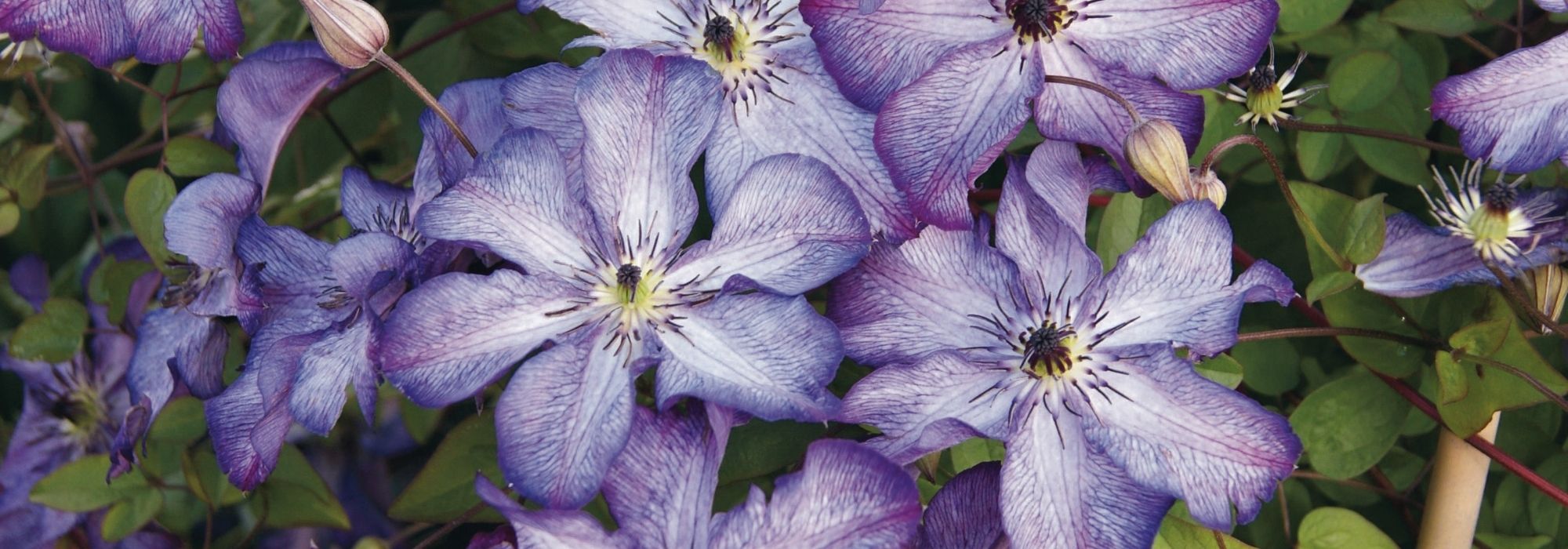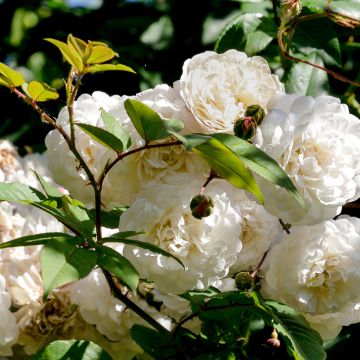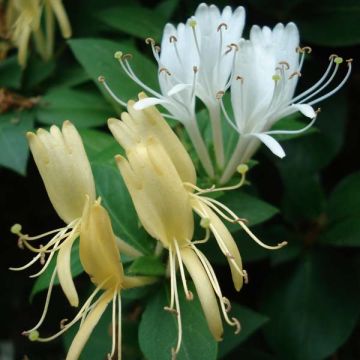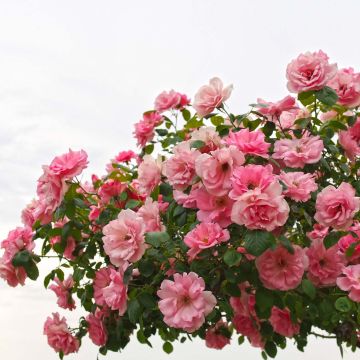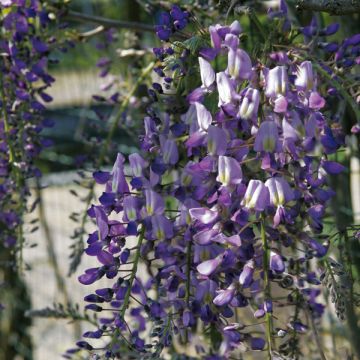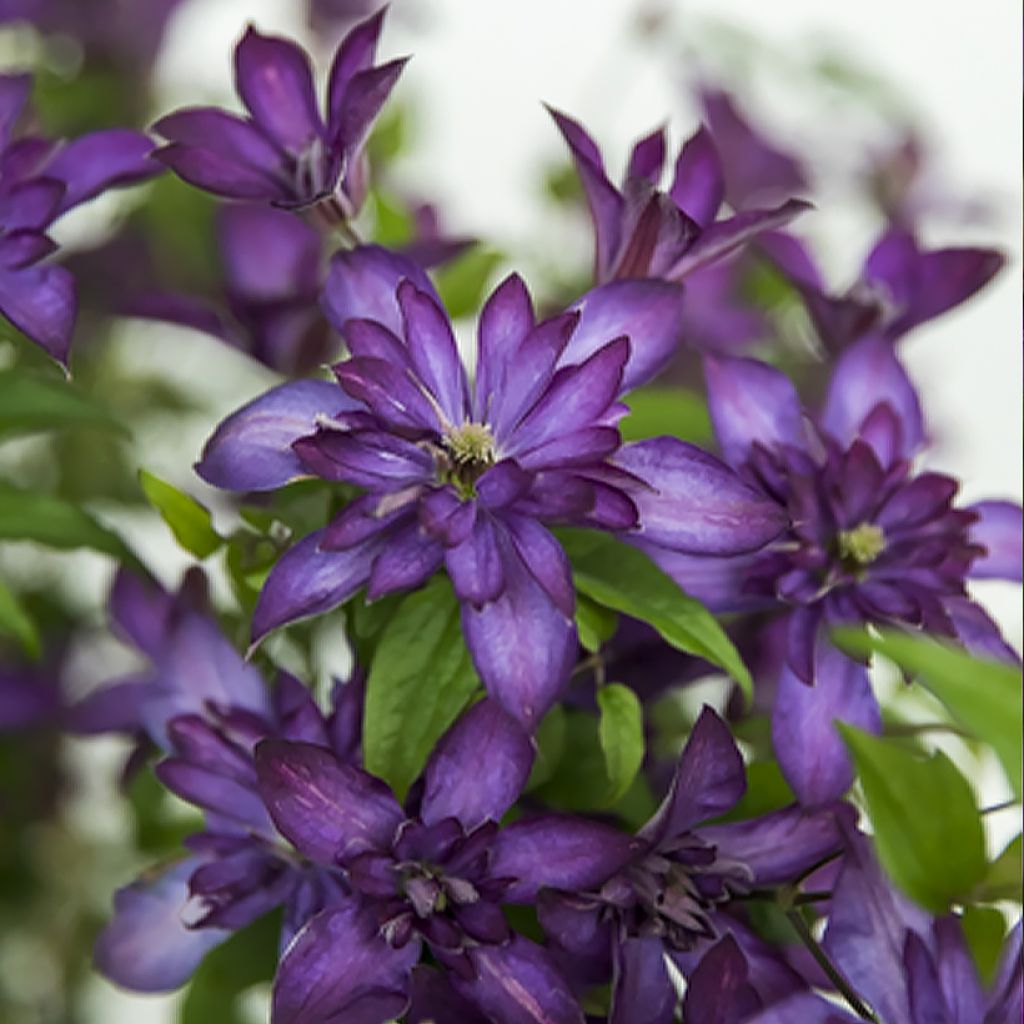

Clematis viticella Glorious Day
Clematis viticella Glorious Day
Clematis (x) viticella Glorious Day ('Zo23020')
Italian Leather Flower
I received a plant in its normal state during the winter period, which means a stem with a green leaf. So, we'll have to wait until next summer to see its beautiful single and double purple flowers. The delivery was quick and the plant was well protected in its cardboard packaging.
Beatrice, 05/02/2025
Special offer!
Receive a €20 voucher for any order over €90 (excluding delivery costs, credit notes, and plastic-free options)!
1- Add your favorite plants to your cart.
2- Once you have reached €90, confirm your order (you can even choose the delivery date!).
3- As soon as your order is shipped, you will receive an email containing your voucher code, valid for 3 months (90 days).
Your voucher is unique and can only be used once, for any order with a minimum value of €20, excluding delivery costs.
Can be combined with other current offers, non-divisible and non-refundable.
Home or relay delivery (depending on size and destination)
Schedule delivery date,
and select date in basket
This plant carries a 6 months recovery warranty
More information
We guarantee the quality of our plants for a full growing cycle, and will replace at our expense any plant that fails to recover under normal climatic and planting conditions.
Would this plant suit my garden?
Set up your Plantfit profile →
Description
Clematis viticella 'Glorious Day' has a multitude of violet, 6 to 8 cm diameter flowers with lemon yellow stamens, throughout the summer. This plant produces both single flowers and semi-double flowers on the same plant. Let this compact clematis climb on a trellis, a lattice, or even in a rose bush. It can also be grown in a pot on a terrace. It is a perfectly hardy climbing plant, undemanding in terms of soil and resistant to diseases.
Clematis are perennial climbing plants from the renonculaceae family found in both hemispheres, particularly in Europe, the Himalayas, China, Australia and North and Central America. It is a genus that offers a wide diversity of colours, shapes, and flower sizes. The variety Glorious Day ‘Zo23020’ is a recent creation from the J van Zoest BV nurseries located in Boskoop, Netherlands. It belongs to the C. viticella group, a species known for its disease resistance and its preference for slightly alkaline and somewhat dry soils in summer.
It reaches a height of about 2.5 to 3 m, with a spread of 1.5 m. Its flowers can be single or semi-double. They measure between 6 and 8 cm in diameter and appear on the current year's shoots continuously from June-July to September. The velvety flowers are a deep violet and reveal a lemon-yellow centre. The green, pinnate leaves disappear in winter. This clematis clings to its support through petioles transformed into tendrils.
This compact clematis is suitable for all gardens, including pots on a terrace. Place a stake or obelisk in your pot and your clematis will thrive. Clematis and roses create an unbeatable combination. You can let your 'Glorious Day' clematis climb on a 'La Feuillerie' shrub rose with yellow flowers or on an English David Austin rose 'Darcey Bussel' with crimson red flowers. At the base of this composition, consider planting hardy geranium 'Crystal Lake' with pale mauve flowers veined with violet, which will protect the base of your clematis from the sun.
Plant habit
Flowering
Foliage
Botanical data
Clematis
(x) viticella
Glorious Day ('Zo23020')
Ranunculaceae
Italian Leather Flower
Cultivar or hybrid
Other Clematis Viticella
View all →Planting and care
Clematis 'Glorious Day' will appreciate a sunny exposure or light shade. It is said that clematis likes to have its head in the sun and its feet in the shade. You have two options to shade its roots and the base of its stems, either place a flat tile or plant some perennials at the base of your clematis. Plant it in fertile, moist but well-drained soil, enriched with well-decomposed manure or compost. Clematis plants can suffer from wilt in overly wet soil but varieties derived from C. viticella seem to be less sensitive. In the planting hole, tilt the root ball towards the support and bury the base of the stems under 7 to 10 cm of soil. Add coarse sand if your soil is not well-draining. After planting, prune the clematis stems to about 25 cm from the base, above a nice pair of buds. During the first few weeks, water regularly. In February, mulch with garden compost or well-decomposed manure, avoiding direct contact with the stems. Train the stems to their support, without crushing them, until the plant clings to it by itself. Clematis plants also like to grow freely in a bush or rose. Prune the stems to 25 cm from the ground, above a pair of healthy buds in March.
Slugs can attack clematis plants and devour the stems. Aphids and greenhouse whiteflies are also potential pests.
Planting period
Intended location
Care
Planting & care advice
-
, onOrder confirmed
Reply from on Promesse de fleurs
Similar products
Haven't found what you were looking for?
Hardiness is the lowest winter temperature a plant can endure without suffering serious damage or even dying. However, hardiness is affected by location (a sheltered area, such as a patio), protection (winter cover) and soil type (hardiness is improved by well-drained soil).

Photo Sharing Terms & Conditions
In order to encourage gardeners to interact and share their experiences, Promesse de fleurs offers various media enabling content to be uploaded onto its Site - in particular via the ‘Photo sharing’ module.
The User agrees to refrain from:
- Posting any content that is illegal, prejudicial, insulting, racist, inciteful to hatred, revisionist, contrary to public decency, that infringes on privacy or on the privacy rights of third parties, in particular the publicity rights of persons and goods, intellectual property rights, or the right to privacy.
- Submitting content on behalf of a third party;
- Impersonate the identity of a third party and/or publish any personal information about a third party;
In general, the User undertakes to refrain from any unethical behaviour.
All Content (in particular text, comments, files, images, photos, videos, creative works, etc.), which may be subject to property or intellectual property rights, image or other private rights, shall remain the property of the User, subject to the limited rights granted by the terms of the licence granted by Promesse de fleurs as stated below. Users are at liberty to publish or not to publish such Content on the Site, notably via the ‘Photo Sharing’ facility, and accept that this Content shall be made public and freely accessible, notably on the Internet.
Users further acknowledge, undertake to have ,and guarantee that they hold all necessary rights and permissions to publish such material on the Site, in particular with regard to the legislation in force pertaining to any privacy, property, intellectual property, image, or contractual rights, or rights of any other nature. By publishing such Content on the Site, Users acknowledge accepting full liability as publishers of the Content within the meaning of the law, and grant Promesse de fleurs, free of charge, an inclusive, worldwide licence for the said Content for the entire duration of its publication, including all reproduction, representation, up/downloading, displaying, performing, transmission, and storage rights.
Users also grant permission for their name to be linked to the Content and accept that this link may not always be made available.
By engaging in posting material, Users consent to their Content becoming automatically accessible on the Internet, in particular on other sites and/or blogs and/or web pages of the Promesse de fleurs site, including in particular social pages and the Promesse de fleurs catalogue.
Users may secure the removal of entrusted content free of charge by issuing a simple request via our contact form.
The flowering period indicated on our website applies to countries and regions located in USDA zone 8 (France, the United Kingdom, Ireland, the Netherlands, etc.)
It will vary according to where you live:
- In zones 9 to 10 (Italy, Spain, Greece, etc.), flowering will occur about 2 to 4 weeks earlier.
- In zones 6 to 7 (Germany, Poland, Slovenia, and lower mountainous regions), flowering will be delayed by 2 to 3 weeks.
- In zone 5 (Central Europe, Scandinavia), blooming will be delayed by 3 to 5 weeks.
In temperate climates, pruning of spring-flowering shrubs (forsythia, spireas, etc.) should be done just after flowering.
Pruning of summer-flowering shrubs (Indian Lilac, Perovskia, etc.) can be done in winter or spring.
In cold regions as well as with frost-sensitive plants, avoid pruning too early when severe frosts may still occur.
The planting period indicated on our website applies to countries and regions located in USDA zone 8 (France, United Kingdom, Ireland, Netherlands).
It will vary according to where you live:
- In Mediterranean zones (Marseille, Madrid, Milan, etc.), autumn and winter are the best planting periods.
- In continental zones (Strasbourg, Munich, Vienna, etc.), delay planting by 2 to 3 weeks in spring and bring it forward by 2 to 4 weeks in autumn.
- In mountainous regions (the Alps, Pyrenees, Carpathians, etc.), it is best to plant in late spring (May-June) or late summer (August-September).
The harvesting period indicated on our website applies to countries and regions in USDA zone 8 (France, England, Ireland, the Netherlands).
In colder areas (Scandinavia, Poland, Austria...) fruit and vegetable harvests are likely to be delayed by 3-4 weeks.
In warmer areas (Italy, Spain, Greece, etc.), harvesting will probably take place earlier, depending on weather conditions.
The sowing periods indicated on our website apply to countries and regions within USDA Zone 8 (France, UK, Ireland, Netherlands).
In colder areas (Scandinavia, Poland, Austria...), delay any outdoor sowing by 3-4 weeks, or sow under glass.
In warmer climes (Italy, Spain, Greece, etc.), bring outdoor sowing forward by a few weeks.































